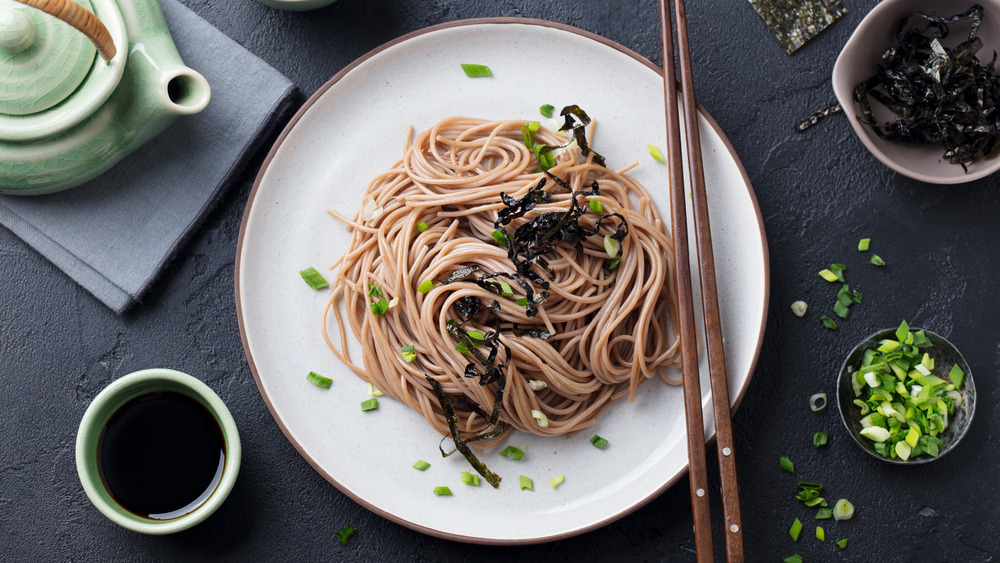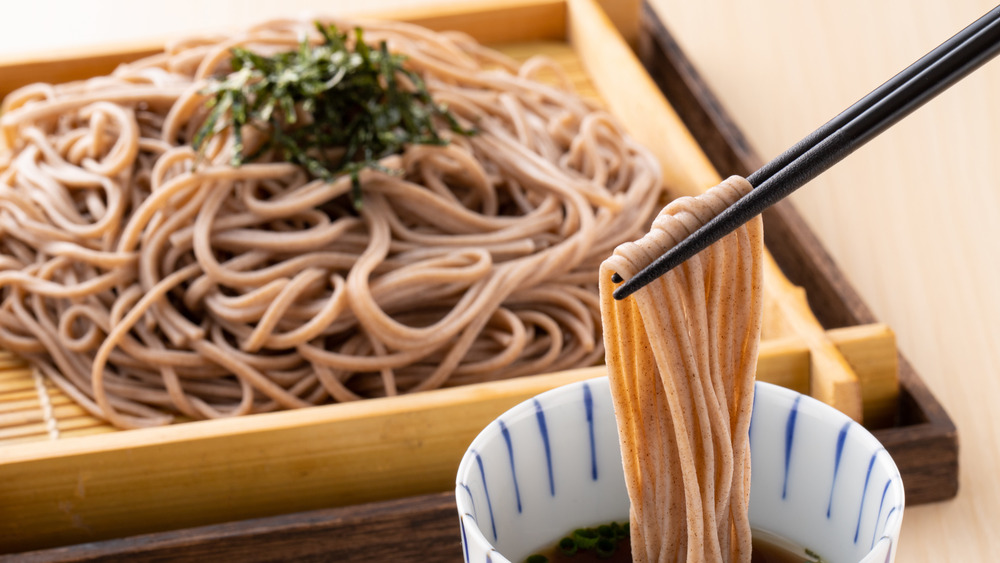The Biggest Mistake You're Making With Soba Noodles
We love soba noodles, those long strands of buckwheat that resemble spaghetti but which have a mild, versatile, nutty flavor that makes soba an ideal choice for cold salads such as sesame noodles as well as hot dishes such as stir frys. When it comes to cooking, soba is pretty foolproof, but knowing exactly how to prepare these tasty noodles is of utmost importance if gumminess is to be avoided: Unfortunately, soba can be prone to overcooking and taking on a mealy, falling-apart texture (via Tasting Table). Let's take a look at how to expertly prepare springy, bouncy, delicious soba noodles.
When cooking soba, toss your Italian cookbooks out the window: That's not the way here. First of all, according to Food52, you don't need to salt the water before cooking; one less step to worry about, right? Just bring a big ol' pot of water to a boil: The noodles will want plenty of space, and water, to move around in so that they don't stick together and get clumpy (via Tasting Table). Toss your soba noodles in the water, making sure they're completely submerged, and remember: Don't overcook them! Per Food52, the noodles only take about five to eight minutes to fully cook.
The most important thing to remember when cooking soba noodles
Take note, because here's the key step: As the soba noodles are boiling, get a big colander ready in the sink. When they're done — taste a strand around the five-minute mark to make sure — drain the noodles fully and then rinse them generously with cold running water. This will quickly interrupt the cooking process, ensuring that your noodles remain springy and light, not gummy (via Tasting Table). Per Food52, you can even massage the noodles together under the running water to wash away any extra starch that would cause the noodles to stick together. This is not something you'd ever do with Italian pasta — you wouldn't want to wash off the salty water in which the noodles bathed — but it's essential for excellent soba. Finally, shake the soba around in the colander, making sure to get rid of any extra water and ending up with a relatively dry noodle.
And there you have it: perfectly cooked soba noodles, ready to be tossed into a cold pasta salad or added to a soup right before serving. Noodles for dinner tonight, anyone?

